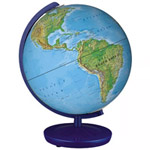Global Integrative Studies, School of

School of Global Integrative Studies: Faculty Publications
Document Type
Article
Date of this Version
5-16-2002
Citation
NORSEC 6 (May 16, 2002)
A product of the North Atlantic Biocultural Organization (NABO) Research Cooperative
Abstract
In 2000 and 2001 the FSl / NABO project Landscapes of Settlement in Northern Iceland collected animal bones from the heavily eroded site of Hrísheimur south of lake Mývatn. The 2001 season produced a substantial archaeofauna from a 2 x 2 meter test excavation of a midden deposit that apparently fills a small sunken-feature structure. While further excavations are planned to collect more material and to better understand the deposit and site as a whole, it may be useful to provide an interim overview of the bone materials recovered from the largest context (003) of the midden deposit tested in 2001. The collection totals 4,634 fragments, of which 1,596 could be identified to a useful taxonomic level. The Hrísheimur collection is made up of domestic mammals (c 74%), birds (c 12%) and fish (c 15%). The domestic mammals include substantial numbers of cattle bones, a few horse bones (some showing butchery marks), pig bones, and bones of both sheep and goat. Nearly a quarter of the domestic mammals bones are from pigs (adult, juvenile and foetal), currently the highest percentage of pig remains known from any period in Iceland. Bird remains include both bone and egg shell. All identified birds are Ptarmigan (grouse). Fish include both fresh water species (arctic char and trout) and marine species (Atlantic cod, haddock and saithe) which were apparently imported as cured rather than whole fish. The Hrísheimur collection shows many similarities with bone collections from the nearby site of Sveigakot across the Kraká river, and definitely derives from a full scale farm rather than a sheep station or seasonal sel. Radiocarbon assay and preliminary analysis of stratigraphy and local tephra suggest the collection probably dates from the late 9th to late 10th centuries AD.
Included in
Animal Studies Commons, Anthropology Commons, Geography Commons, International and Area Studies Commons


Comments
Copyright 2002, the authors. Used by permission.